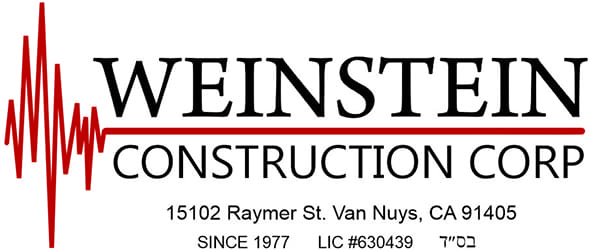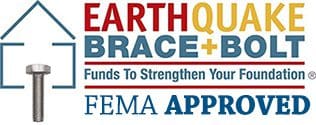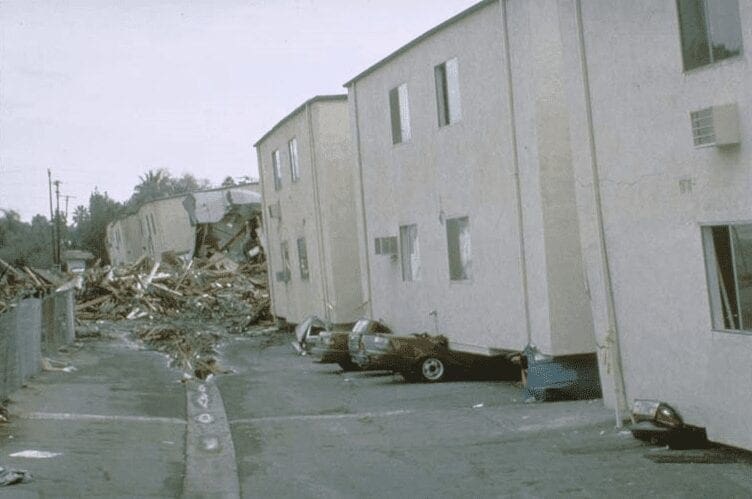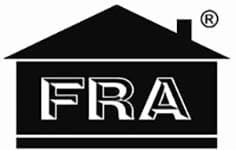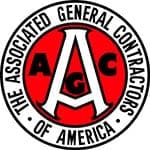Los Angeles Soft-Story Retrofit Program
The Northridge Earthquake, a magnitude-6.7 earthquake in 1994, brought national attention to a fundamental structural flaw that plagues thousands of buildings located in California’s earthquake-prone cities. As the earthquake shook the city, the bottom floor of a Northridge Meadows apartment complex collapsed beneath the two floors above it. Sixteen residents, all on the first floor, died as a result. Why did the complex collapse when so many other buildings remained standing? Because Northridge Meadows was a Soft Story building.
After the devastating damage caused by the Northridge earthquake in 1994, City officials across California researched ways to minimize earthquake damage and save lives in future quakes. In 2016, the Los Angeles Department of Building and Safety issued Ordinance 183893 to establish mandatory standards for earthquake hazard reduction in existing wood-frame buildings with soft, weak, or open-front walls. These types of buildings are known as Soft Story structures and were commonly constructed as apartment buildings with an open first story to accommodate parking.
Seismic Retrofitting Can Save Your Soft-Story Structure
Without proper seismic retrofitting, Soft Story structures are vulnerable to damage from earthquake generated lateral forces that propel structures side to side. Once the first floor folds, the upper floors pancake down on top of it, crushing anything underneath.
WHAT ARE SOFT-STORY Buildings
Soft Story buildings, so called for having first stories much less rigid than the stories above, are particularly susceptible to earthquake damage because of large, unreinforced openings on their ground floors and in their typically wood-frame construction. These openings often accommodate parking spaces, large windows and expansive lobbies in residential and retail buildings.
Such apartment buildings with flimsy first floors and “tuck under” parking spaces became popular in the 1940s and 50s, as the City of Los Angeles spread West toward the Pacific Ocean and North into the San Fernando Valley. In fact, recent stories in the Los Angeles Times show that many of the largest and most vulnerable apartment buildings are in the San Fernando Valley.
Sadly without a Soft Story retrofit, such structures are susceptible to damage from lateral forces during seismic activity. During the 1994 Northridge earthquake, many Soft Story buildings collapsed. And before Northridge, in the San Fransisco earthquake of 1989 Soft Story structures collapsed.
Steps to complete a Soft Story retrofit
If you are a Soft Story property owner or manager, start by finding an experienced retrofitting contractor in Los Angeles, like Weinstein Construction, to make compliance easier. Over 90 Soft Story retrofits have already been completed by their skilled contractors in the Los Angeles area and they know exactly what it takes to code the home. A successful retrofit Soft Story contractor will direct you through every step of the process and through most pressure. Here’s a step-by-step look at what’s involved in retrofitting a Los Angeles Soft Story: Initial Consultation The best Soft Story retrofit contractors can offer a free first consultation. One of their experienced contractors and structural engineers will go over everything with you at this first meeting. The builder inspects the building and produces a detailed plan of the necessary work. They will then contact you to schedule a follow-up meeting. They will go through the retrofit options at this meeting and provide you with a detailed report outlining all the work that needs to be done, a timetable to complete it, and a cost estimate.
IS THERE ANY GOOD NEWS?
The good news is that Weinstein Construction’s retrofitting experts specialize in Soft Story solutions and offer Soft Story structure retrofit reinforcement at a reasonable cost! Weinstein Construction’s Soft Story seismic retrofit can strengthen multifamily apartment complexes so that they are better prepared to deal with the next big seismic earthquake strike, helping to save lives, cars, and other valuable property.
IS MY BUILDING A “SOFT STORY” BUILDING THAT MAY REQUIRE A RETROFIT?
Property owners typically receive a City LABDS order requiring retrofitting be done on their Soft Story building. Such structures often have Soft Story parking solutions that require a seismic retrofit. Upon receipt of such an order, the property owner will have a limited amount of time to complete the Soft Story retrofitting work. Soft Story building retrofitting work is typically done in three phases:
- Submitting a retrofit plan within 2 years
- Obtaining a permit to begin construction or demolition within 3.5 years and
- Completing the job within 7 years.
AN UNREINFORCED BUILDING WITH THE FOLLOWING CRITERIA WILL REQUIRE SEISMIC RETROFITTING:
- A building that was built under building code standards that were in place before January 1, 1978
- A building that consists of two or more stories in a wood frame construction and
- A building that contains ground floor parking or other open floor spaces.
LOS ANGELES ORDINANCE 183893
After a large number of wood-frame, Soft Story buildings in the greater Los Angeles area were severely damaged by earthquake seismic activity, a city-wide ordinance was passed into law in November 2015, obligating the owners of Soft Story construction buildings to retrofit them in strict accordance with city retrofitting codes.
The City of Los Angeles Department of Building and Safety (“labds”) has identified buildings* that are most vulnerable to seismic activity, thus requiring a seismic retrofit, as having the following criteria:
- Consist of 2 or more stories of wood frame construction
- Built under building code standards enacted before January 1, 1978 and
- Contains ground floor parking or other similar open floor space.
* Note that the ladbs Soft Story Program does not apply to residential buildings with 3 or less units. Owners of larger residential units have orders to comply with the Soft Story ordinance.
The purpose of the city’s mandatory retrofitting program was to reduce the potential risk of injury and loss of life and property that could result from seismic earthquake activity taking a toll on vulnerable Soft Story buildings. Without strengthening and retrofitting the construction of such vulnerable buildings, structural failure can occur both during and/or after an earthquake. The LABDS’ seismic retrofit program is one of the nation’s largest movements to promote seismic Soft Story building safety!
Many Los Angeles property owners and tenants are aware of the Soft Story retrofit ordinances in Los Angeles. If you don’t remember, in 2015, the city council approved two construction measures regarding Soft Story buildings. The Los Angeles Soft Story retrofitting system was revealed shortly after the new policies were approved. The idea behind this is to make sure that when the next earthquake hits, buildings across the city will be structurally sound. So what are the new laws covering and how are they applicable to you?
The first order, 183893, specifies the type of buildings required under the Los Angeles Soft Story retrofit system to complete a seismic upgrade. Built before 1978, this list includes wood-framed structures and Soft Story buildings. Ordinance 184081 provides the deadline for building owners to complete their retrofit and comply with the compulsory system. The second order has two components depending on whether you intend to retrofit or completely demolish the house.
City officials have compiled a list of all the buildings and structures that they consider as at risk. The city sent a letter to the owners of these buildings notifying them of the compulsory Los Angeles retrofit Soft Story programmer. Such letters gave owners seven years in most cases to apply their plans and complete the necessary retrofits. You should have hired a Soft Story retrofit contractor now if you got one of these documents. If you haven’t hired one, or don’t know if you need one, don’t worry, we’re here to answer all your questions and make it simple for you to understand the process.
